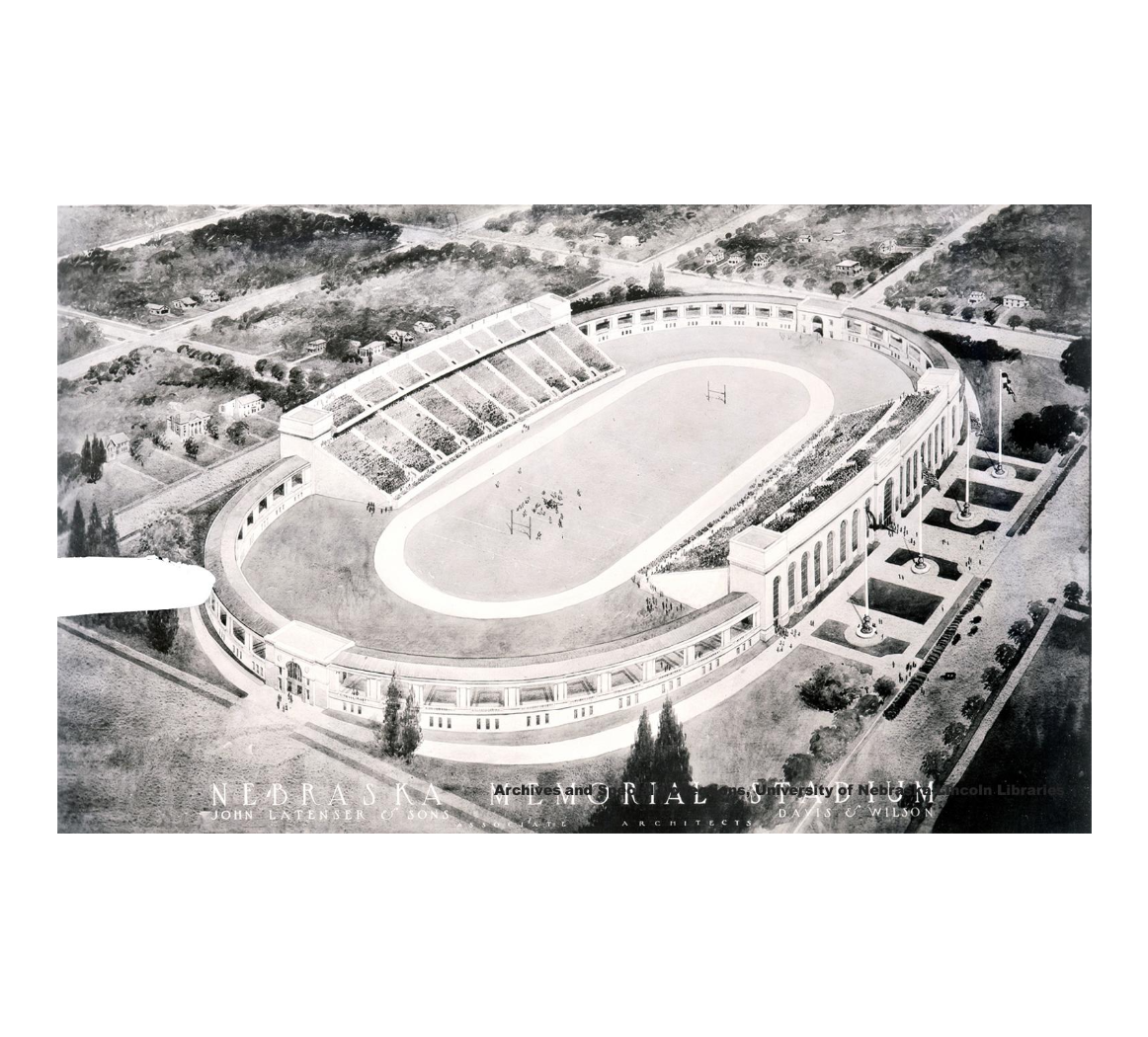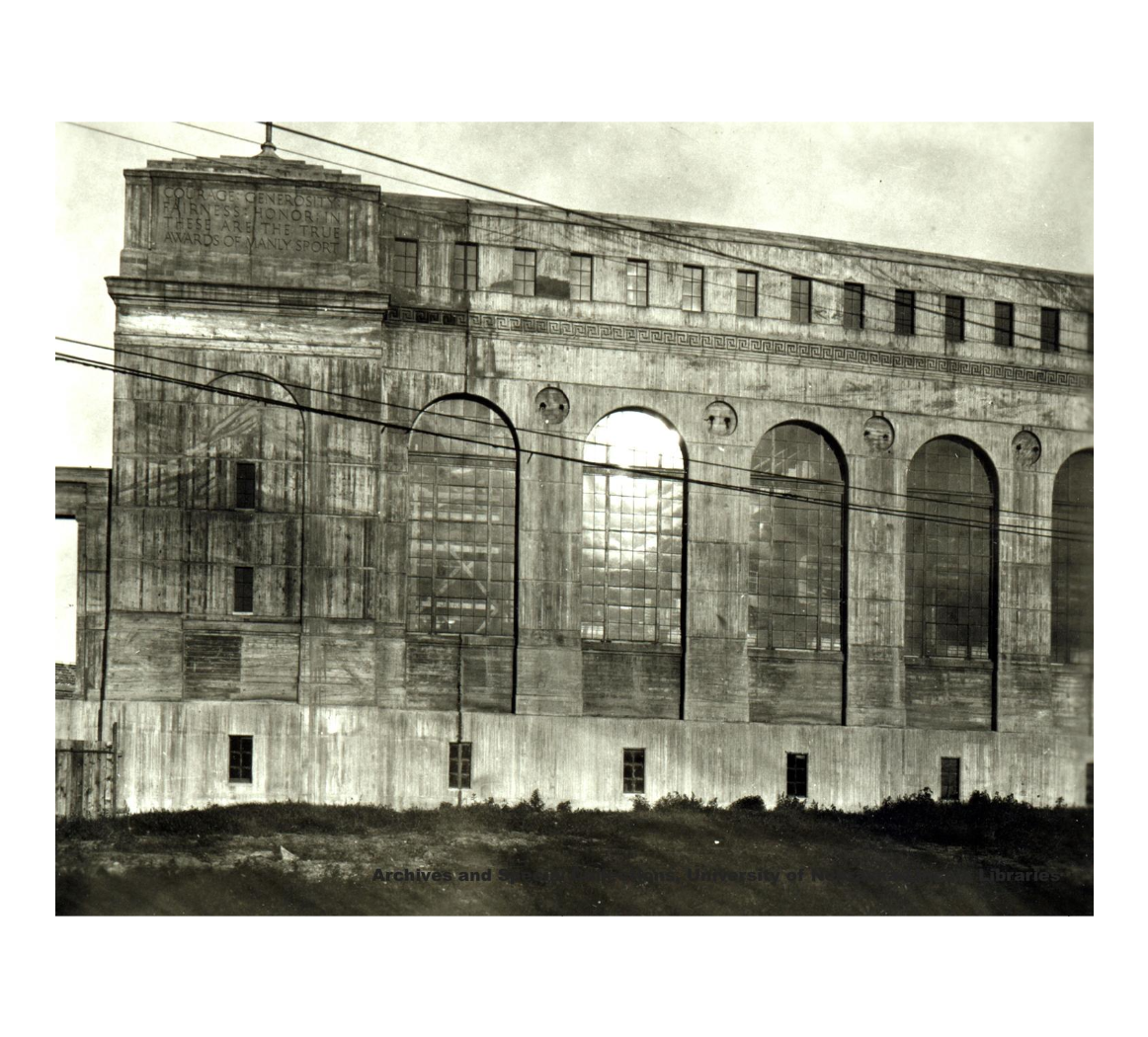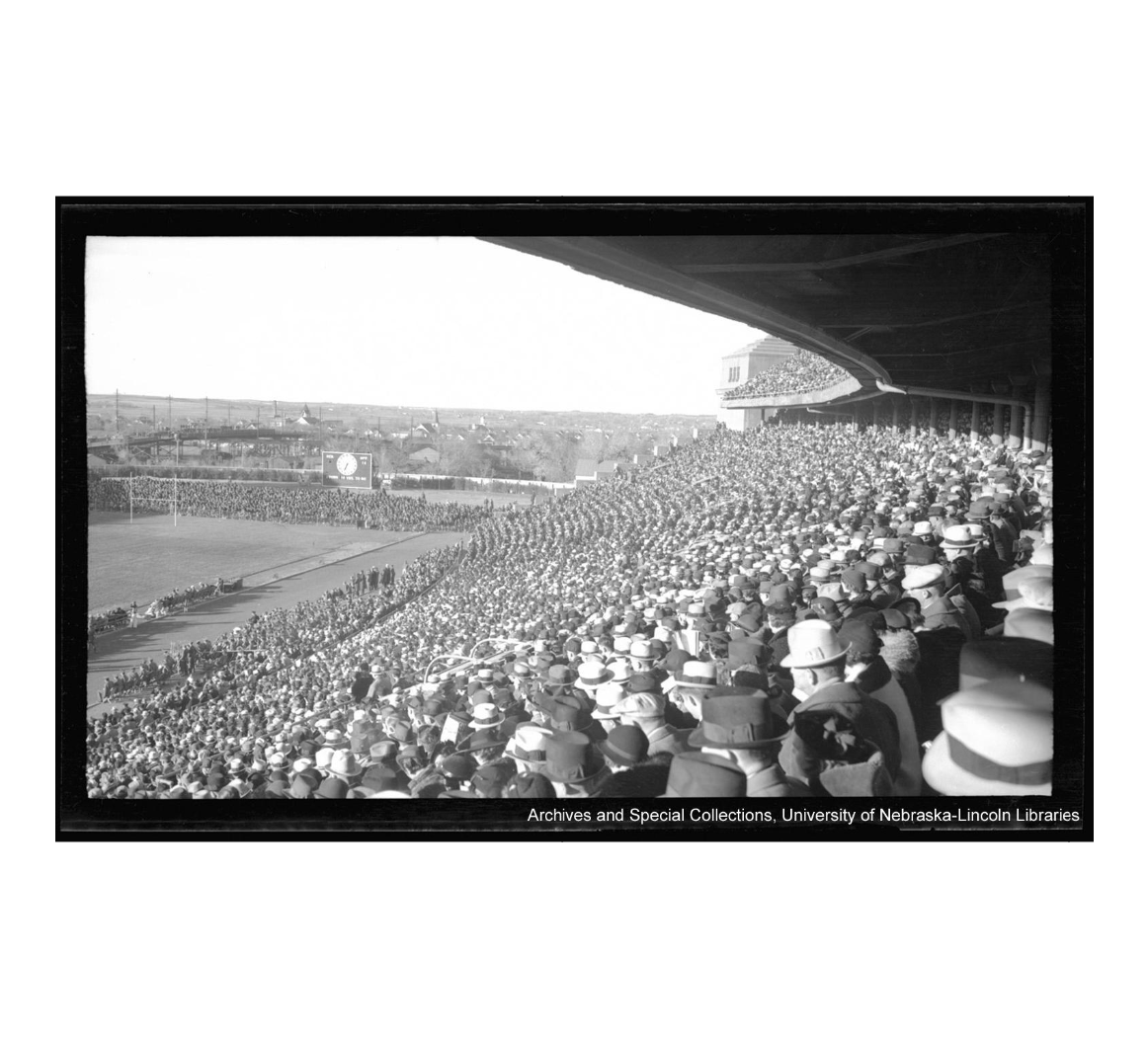
It turns 100 this fall. Based on the party it hosted just a few weeks ago, though, it has more than a little life left in it.
Nebraska’s Memorial Stadium showed off a new trick on Aug. 30, transforming Tom Osborne Field into Terry Pettit Court so that the Husker volleyball team could play before 92,003 fans — a stadium record that doubled as an official attendance record for a women’s sporting event.
On that Wednesday, and for a handful of Saturdays each fall, the gray cathedral overflows with a Sea of Red and enough people to form the third-largest city in the state. Ahead of the football team’s home opener — Memorial Stadium’s 390th consecutive football sellout, another record — Nebraska Today assembled a few facts, stories and stats to help celebrate its centennial.
‘They kept its faith; They died its heroes’
Tasked with raising money for a stadium worthy of the Nebraskans lost during World War I, the Alumni Association — alongside a group of backers known as the “O-Street Gang” — would ultimately secure more than $300,000.
Construction began in late April of 1923, with then-Chancellor Samuel Avery breaking ground via horse-drawn plow. Not even six months later, on Oct. 13, 1923, the 31,000-seat structure would host its first football game, a 23-0 Husker victory over Oklahoma that was played on dirt. Nebraska wore blue to accommodate the Sooners, who had traveled with only their crimson uniforms. On Oct. 21, 2023, when Nebraska takes on Northwestern, the Huskers’ jerseys will sport blue-outlined numbers as a nod to that inaugural game.
Forever young
Though its first few decades included relatively few upgrades, Memorial Stadium has since evolved over and over again, adding to its asymmetric charm. In the mid-1960s, the construction of seating sections in the south and north endzones, followed by wings in the latter, would raise the stadium’s profile both architecturally and statistically: As it adopted its now-familiar bowl shape, Memorial Stadium’s capacity doubled to 62,000-plus seats.
Entering middle age, the stadium would undergo numerous facelifts and the occasional tuck:
- A new press box arose in 1967, alongside an elevator that saved reporters from climbing to the peak of West Stadium
- Natural grass, long the choice of football teams nationwide, was replaced by AstroTurf in 1970
- A 1972 expansion of its south endzone upped the stadium’s capacity to 73,650
- In 1994, the Huskers’ home became the first college-only football stadium to install what’s now considered de rigueur: video boards offering instant replay
- The late 1990s witnessed a flurry of changes: Permanent lights were installed, while the field — named for the recently retired Tom Osborne — transitioned from AstroTurf to FieldTurf
- North Stadium received 6,500-plus new seats in 2006, pushing capacity north of 81,000
- In 2013, a major East Stadium expansion boosted capacity again — this time to nearly 90,000 (later reduced to about 85,000) — and saw the opening of the Center for Brain, Biology and Behavior
- As the 2023 season opens, so will a stadium-adjacent, 350,000-square-foot facility containing a new strength complex and locker room, among other amenities

Gotta catch ’em all
Though designed and known mostly for its football games, Memorial Stadium has hosted multiple events beyond the realm of athletics.
In September of 1987, the Farm Aid III concert drew more than 60,000 people and raised approximately $1 million for financially strapped farmers. Among those playing the 10-hour show? Willie Nelson, Neil Young and John Mellencamp. Another musical legend, Garth Brooks, brought nearly 90,000 fans to the stadium for a 2021 concert, where he told the crowd, “This is the coolest thing I’ve ever been a part of.”
A considerably smaller but no less enthusiastic crowd of Pokémon Go players — more than 3,700 of them — descended on Memorial Stadium for a catch-a-thon in the summer of 2016, at the height of the game’s popularity.

First-year Husker students taking part in the annual Big Red Welcome, meanwhile, get to experience their own Tunnel Walk before forming the Nebraska N at midfield. And following the COVID-19 pandemic, the University of Nebraska–Lincoln celebrated the return of in-person graduation ceremonies by holding spring commencement in Memorial Stadium for the first time, a decision now becoming tradition.
Facts and go figures
- Nebraska football has gone undefeated at Memorial Stadium in 33 seasons
- The team’s longest winning streak at the stadium lasted 47 games, a run stretching from 1991 to 1998
- With the aid of portable lights, Nebraska played its first night game at the stadium on Sept. 6, 1986, when the Huskers took down Florida State, 34-17
- The Huskers’ most common opponent at Memorial Stadium: Missouri, which Nebraska has faced 45 times in Lincoln
- The stadium’s football sellout streak, which began Nov. 3, 1962, is on pace to reach 396 games by season’s end













